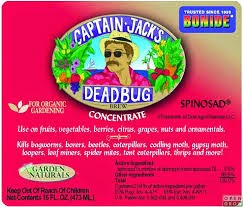 |
| Our state flower, CA Poppy (Eschscholzia californica), Photo from Las Pilitas Nursery, used by permission. |
The "California Floristic Province" (CAFP) is home to 2124 endemic (found nowhere else) plant species; 60% of its plants are endemic.* It has been designated by Conservation International as one of 35 worldwide biodiversity hotspots, the places with the most biodiversity and the most loss from human development. From the Critical Ecosystem Partnership Fund:
As one of only five areas with a Mediterranean-type climate in the world — all of which are on the hotspot list — the California Floristic Province is characterized by hot, dry summers and cool, wet winters. The region contains a wide variety of ecosystems, including sagebrush steppe, prickly pear shrubland, coastal sage scrub, chaparral, juniper-pine woodland, upper montane-subalpine forest, alpine forest, riparian forest, cypress forests, mixed evergreen forests, Douglas fir forests, sequoia forests, redwood forests, coastal dunes, and salt marshes. Today, about 80,000 square kilometers or 24.7 percent of the original vegetation, remains in more or less pristine condition.
The number of vascular plant species found in the California Floristic Province is greater than the total number of species from the central and northeastern United States and adjacent parts of Canada, an area ten times larger than the California hotspot.
Human population pressures have rendered California one of the four most ecologically degraded states in the country... California supplies one-half of all the agricultural products consumed in the United States each year... Native grasslands and vernal pool habitats in the hotspot have been reduced to about one percent of their original extent... Other seriously threatened ecosystems include wetlands, riparian woodlands and southern maritime sage scrub, which have all been reduced to 10 percent or less of their original area...[sorry to be so depressing.]
 |
This lacy-leafed Catalina Ironwood is one of a number of plants
found only on the Channel Islands.
Fossils show Ironwoods grew all over the Southwest– over 6 million years ago.
|
The CAFP includes all but the easternmost and Sonoran Desert parts of California, as well as southern coastal Oregon and northern Baja. Some species that used to be found widely before the ice ages are now found only in California, which didn't get iced. They are "paleoendemic." Examples are the Giant Sequoia, the largest tree on earth by volume, and Coast Redwood, the tallest tree on earth. Is that special or what? Other "neoendemics" developed relatively recently as California got drier; these include many Ceanothus and Manzanita species. The varied climates and soils of California further promotes biodiversity.
 |
| Ceanothus 'Concha' - According to the UK Telegraph, this cultivar of a CA native came out of a garden in Wales in 1986! Photo from Las Pilitas Nursery, used by permission. |
California native plants were quite the rage in England over a century ago. The English take their gardens very seriously. They bred some fine cultivars. Too bad Californians can't grow their own natives. I see casualties in expensive landscape plantings everywhere. The reason, I suspect, is simple. Underwater in winter in drought years, overwater in summer, or both. Think about it. Most of California gets not one drop of rain from May through October. Our natives do not know how to cope with summer water. At all. Perhaps CA gardeners can adapt!
* Source: Critical Ecosystem Partnership Fund website. (Note: the numbers and percentages of CA endemic plants varies widely in different sources. This source is relatively recent and has footnotes.)
For more information: Why is the Flora of California so Diverse?
If you wish to subscribe to this CA Native Garden blog, click here.
If you wish to use photos or text from this blog, click here.
To subscribe to this blog,
click here.
To use text or photos from this blog, click here. To share this post (do share!) click on the appropriate tiny icon below (email, facebook, etc.)
To use text or photos from this blog, click here. To share this post (do share!) click on the appropriate tiny icon below (email, facebook, etc.)




















































